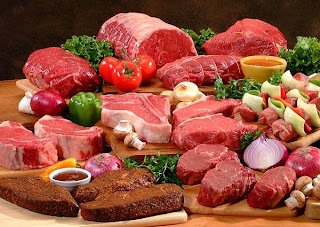Utilization
Protein is used for building, maintaining and repairing muscle, skin, blood, and other tissuesenergy takes priority over tissue building
Very little protein is used as fuel when caloric supply is adequate The best fuel choices are carbohydrates and fats
If carbohydrates are not adequate, protein can convert to carbohydrates via gluconeogenesis
Nitrogen excretion does not rise following physical activity when carbohydrates are adequate.Protein contains nitrogen
Best Sources
Eggs, milk, fish, and meat Certain vegetable proteins can be eaten together or with animal proteins to compliment proteins for proper amino-acid ratios
Requirements
Average consumption for U.S. is 100 grams/day Protein requirements
10% to 20% of the diet should be protein for sedentary individuals 40 grams/day for females 55-70 grams/day or 0.8 grams/kg body weight for males Recommended protein intake for athletes or physically active people (Paul 1989) Protein and carbohydrate requirements increase somewhat more calories ratio of protein to carbohydrates does not change12% to 20% of the total calories Increases slightly during an increase or change of training Surprisingly protein requirements for endurance athletes are greater than weight trained athletes Protein requirements increase when calories are insufficient
Weight Loss
Obese individuals eating a slightly higher protein diet (25% of calories from protein), lost significantly more weight and body fat than those eating a slightly lower protein diet (12% of calories from protein). (Skov, et. al., 1999)Overweight women consuming a diet with a carbohydrate/protein ratio of 1.4 (125 g protein/day) lost more weight and body fat than those eating a ratio of 3.5 (68 g protein/day).

No comments:
Post a Comment